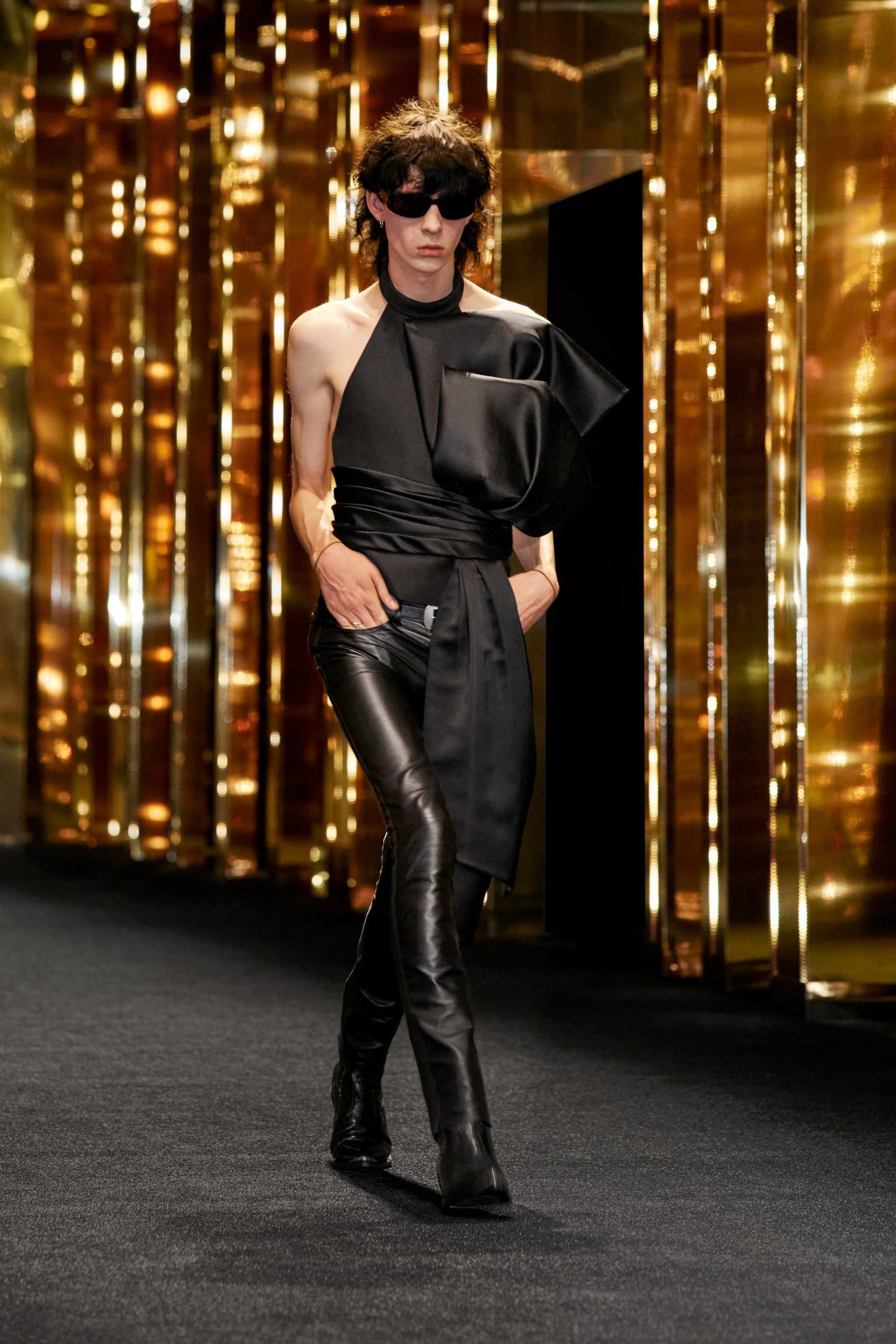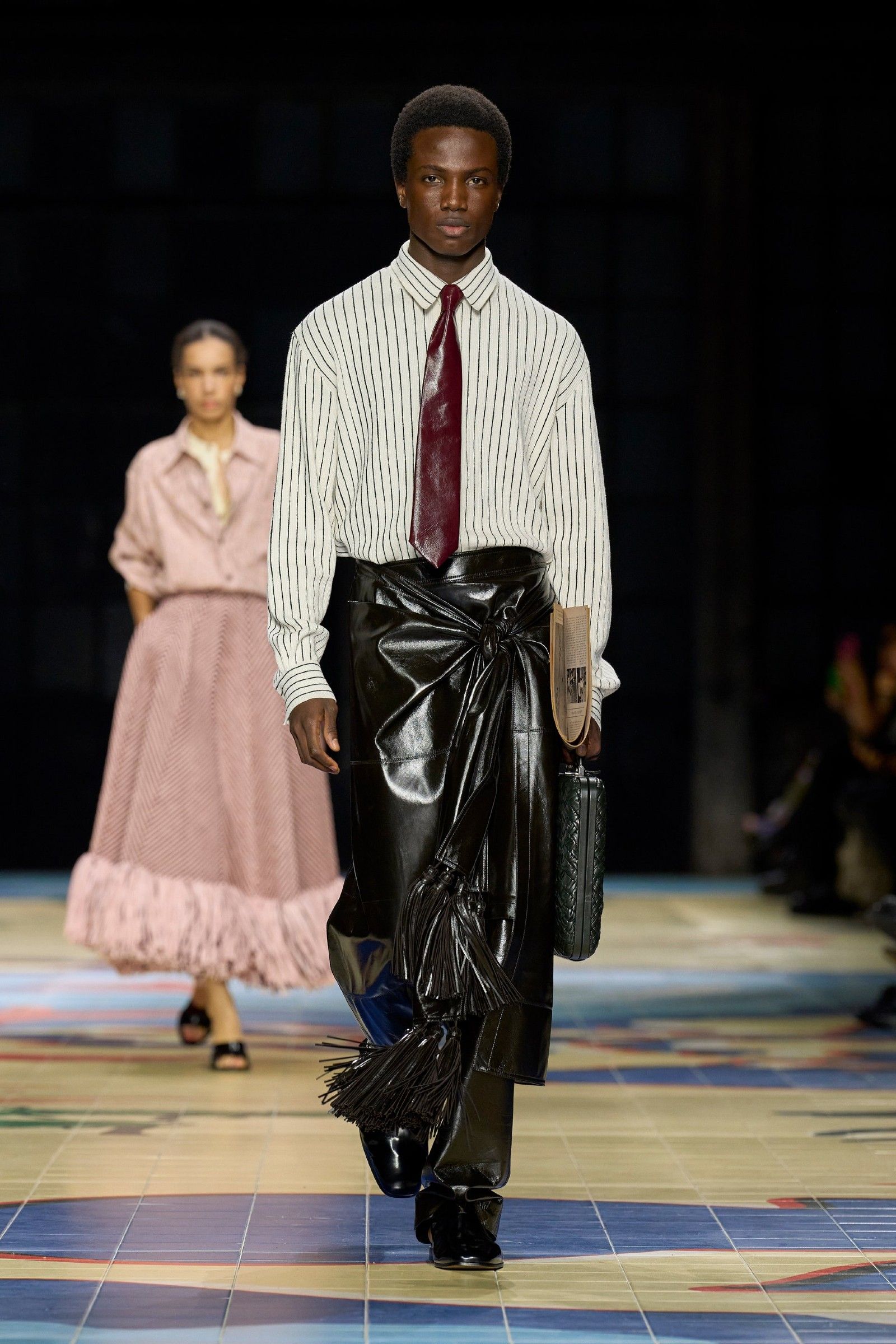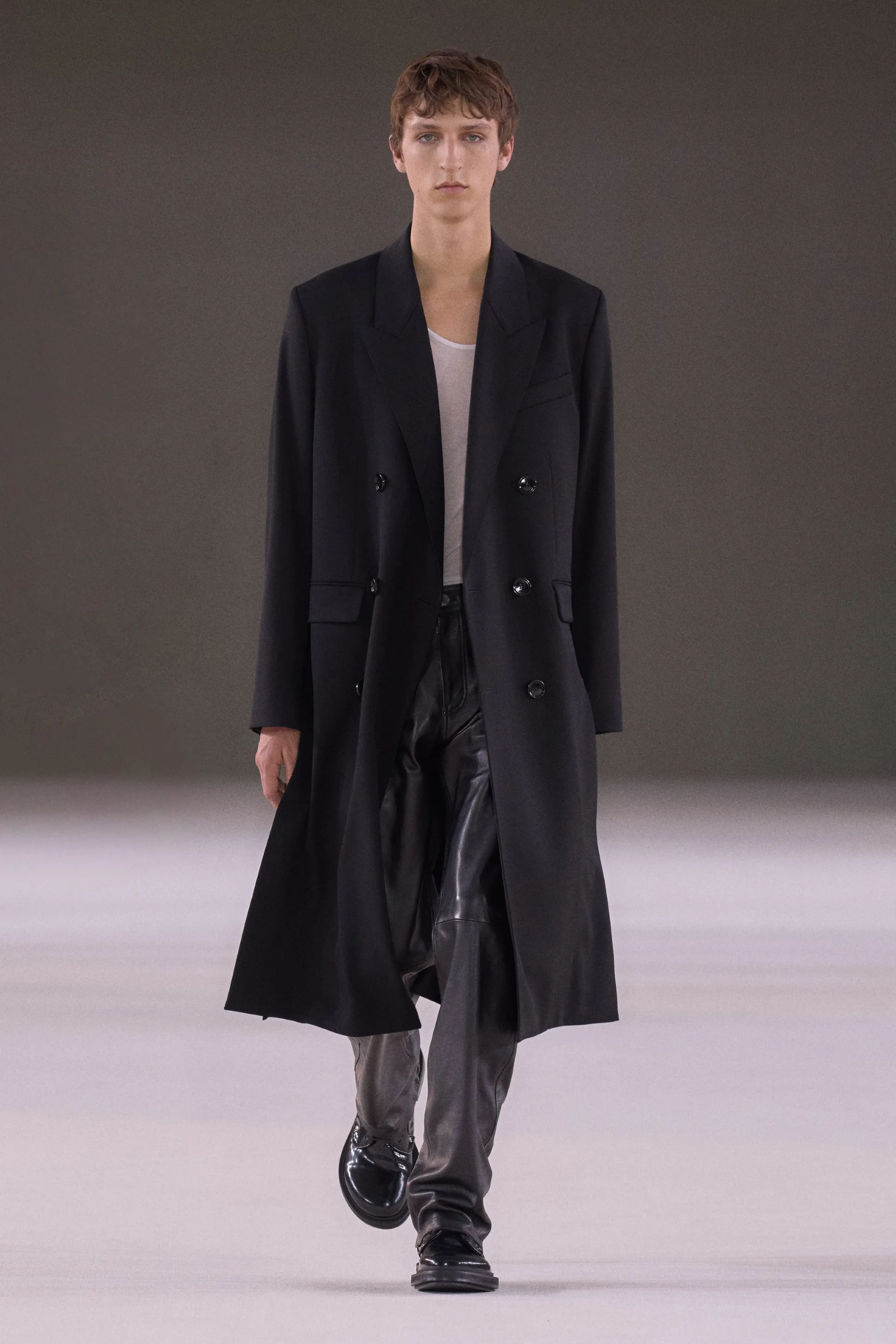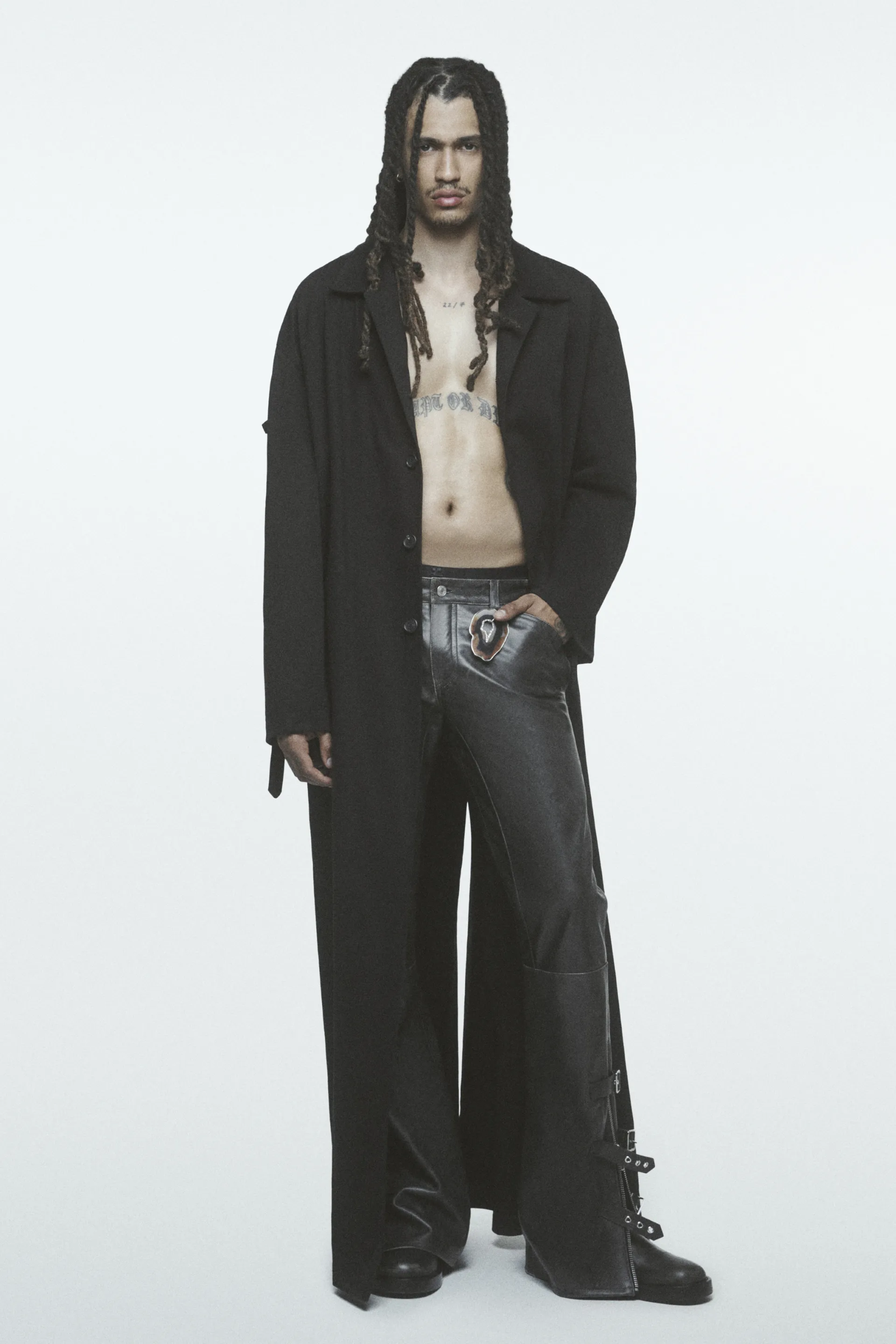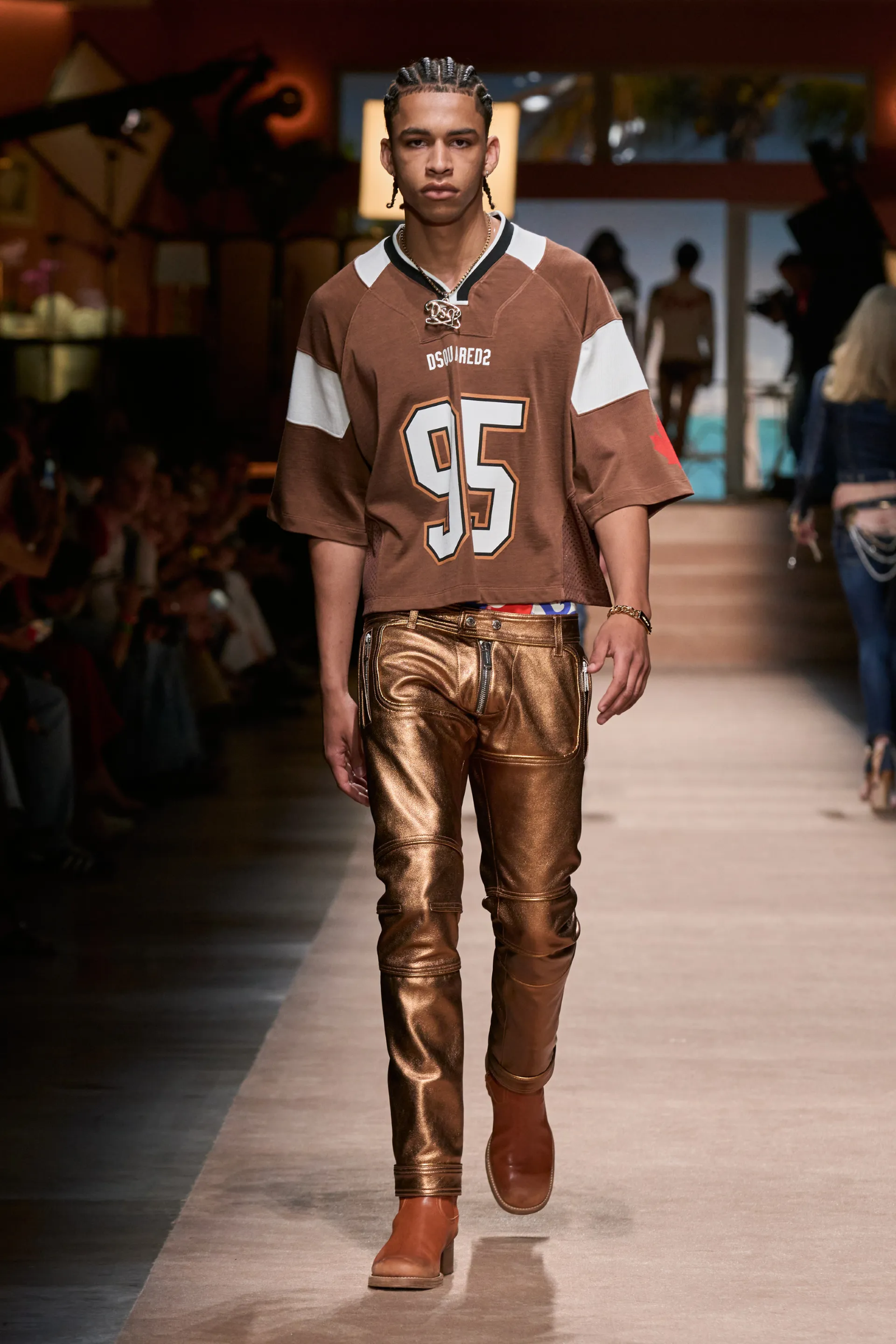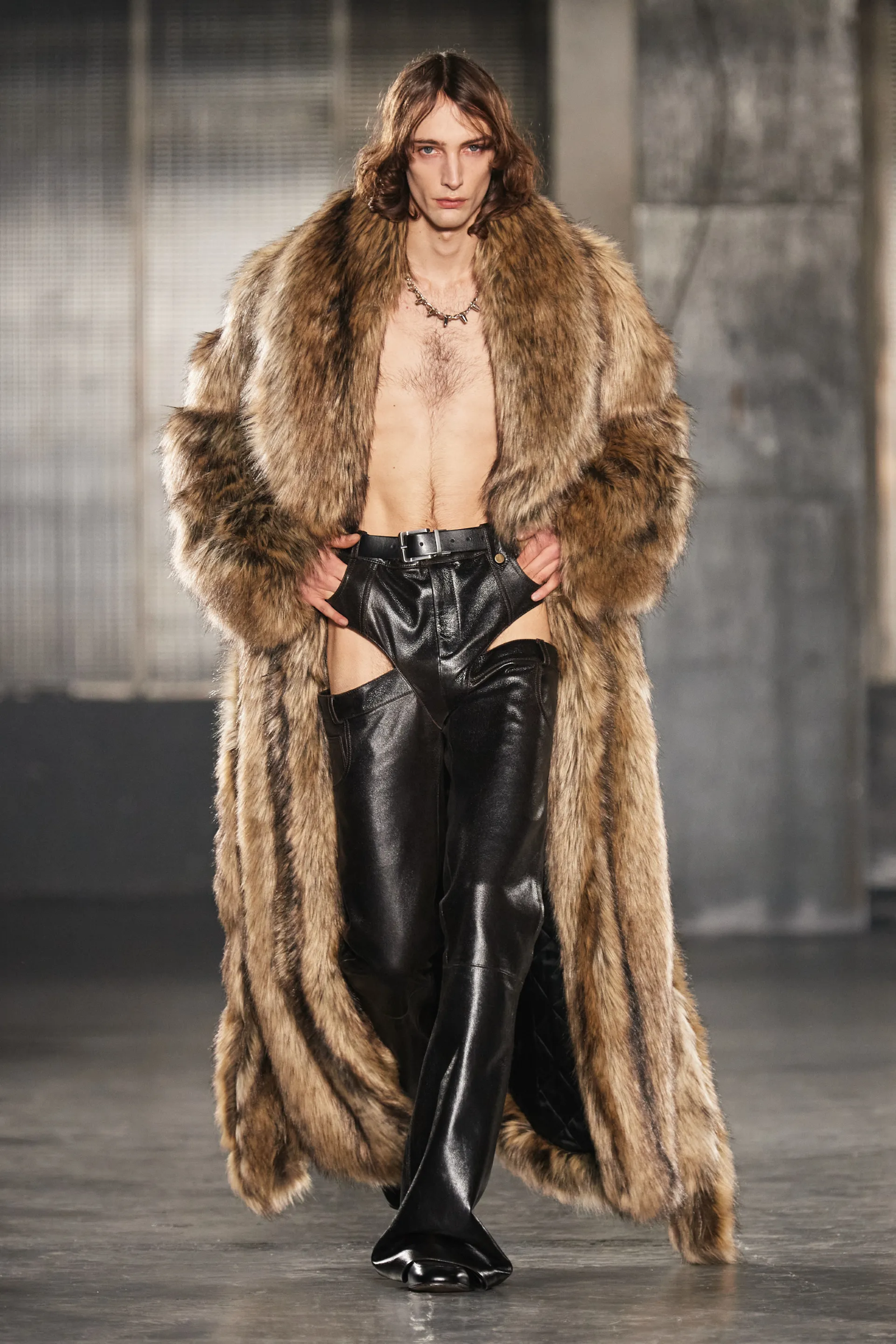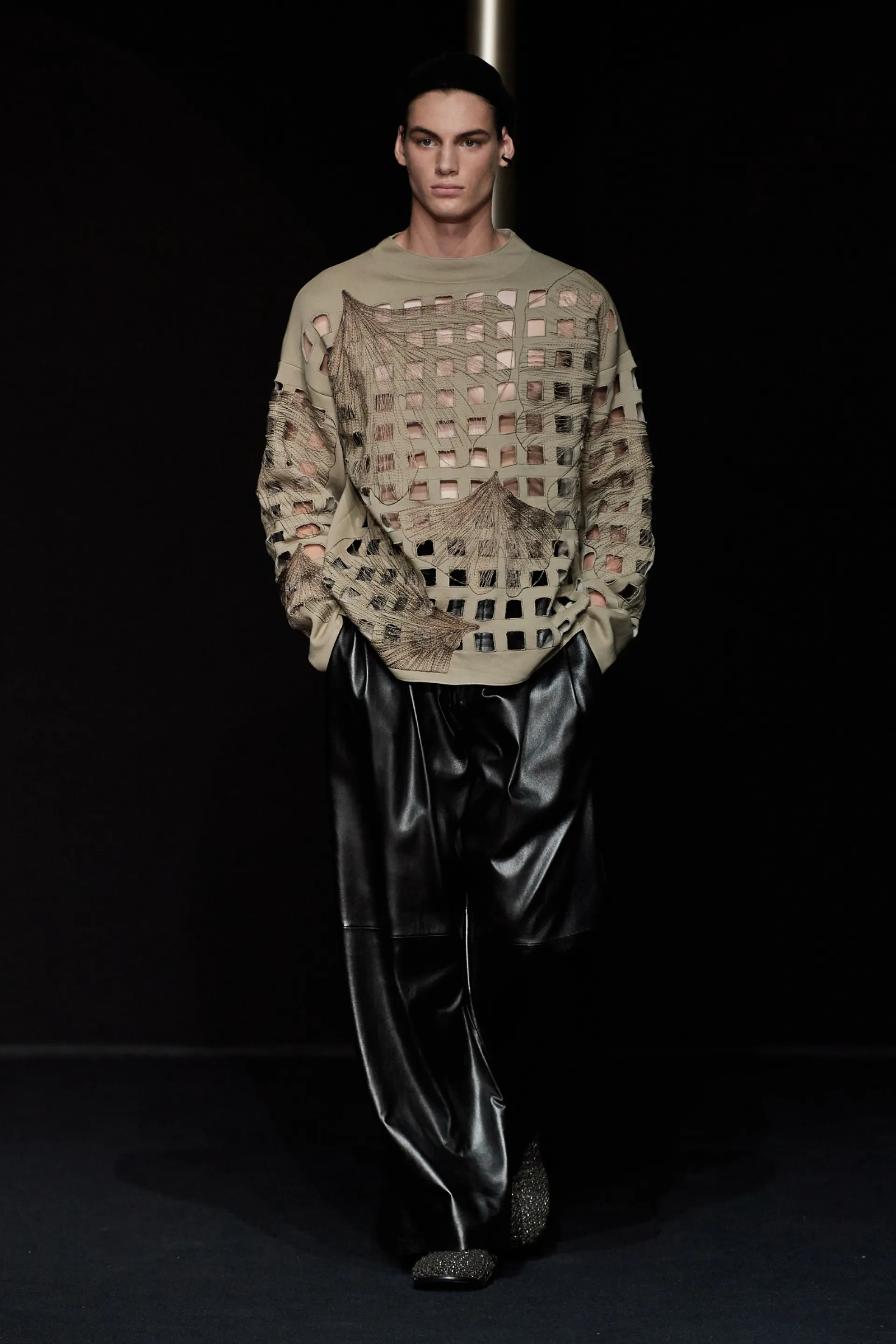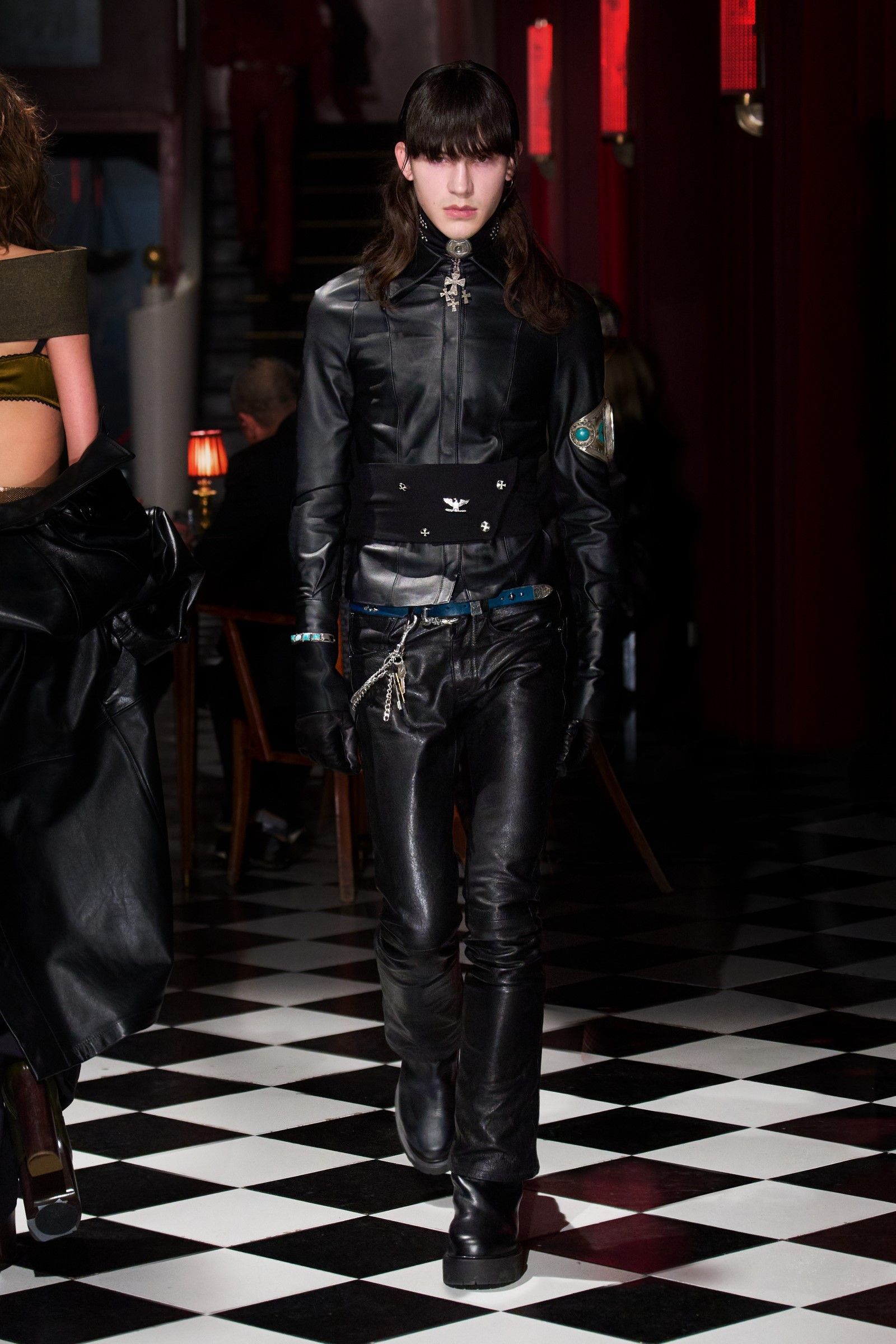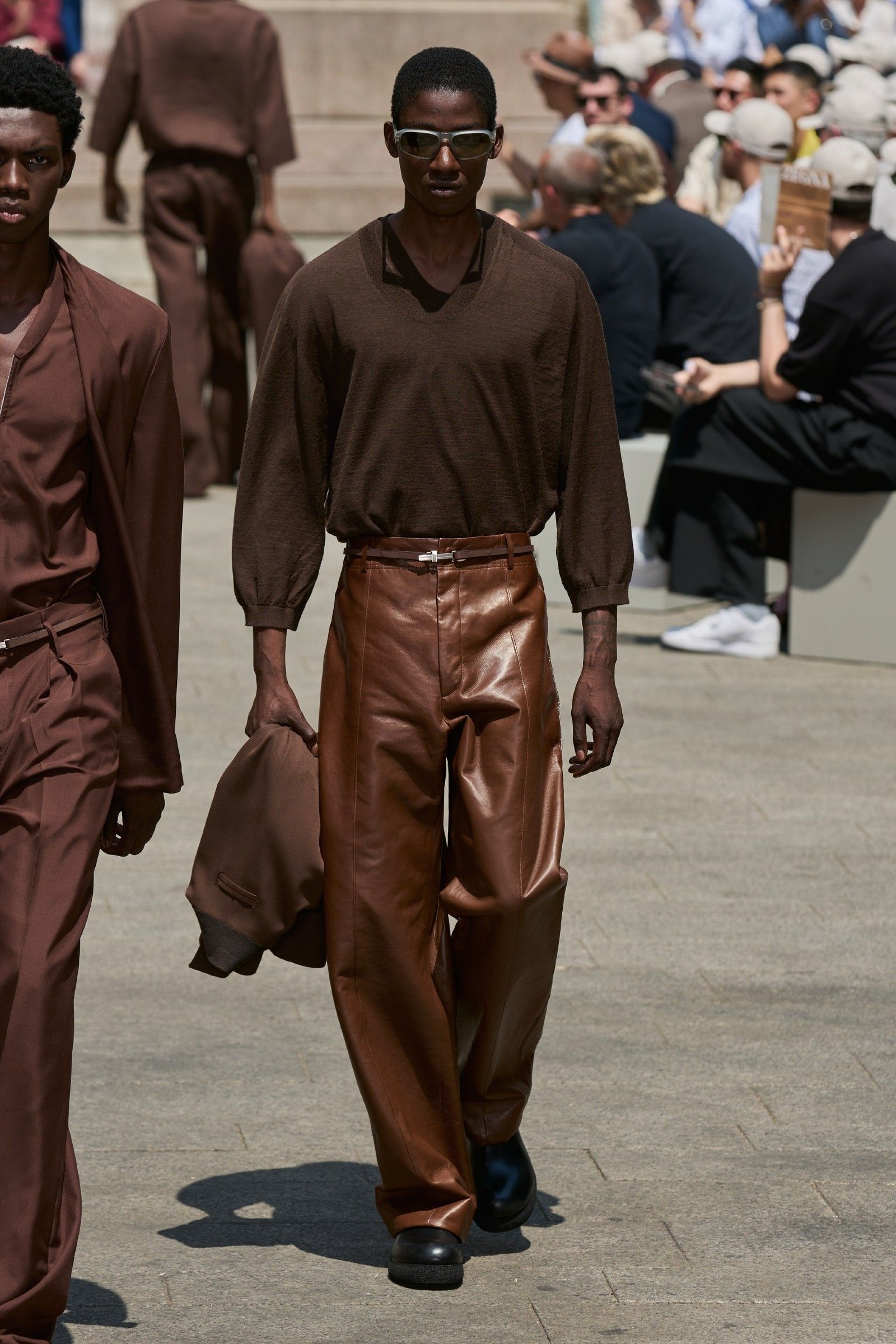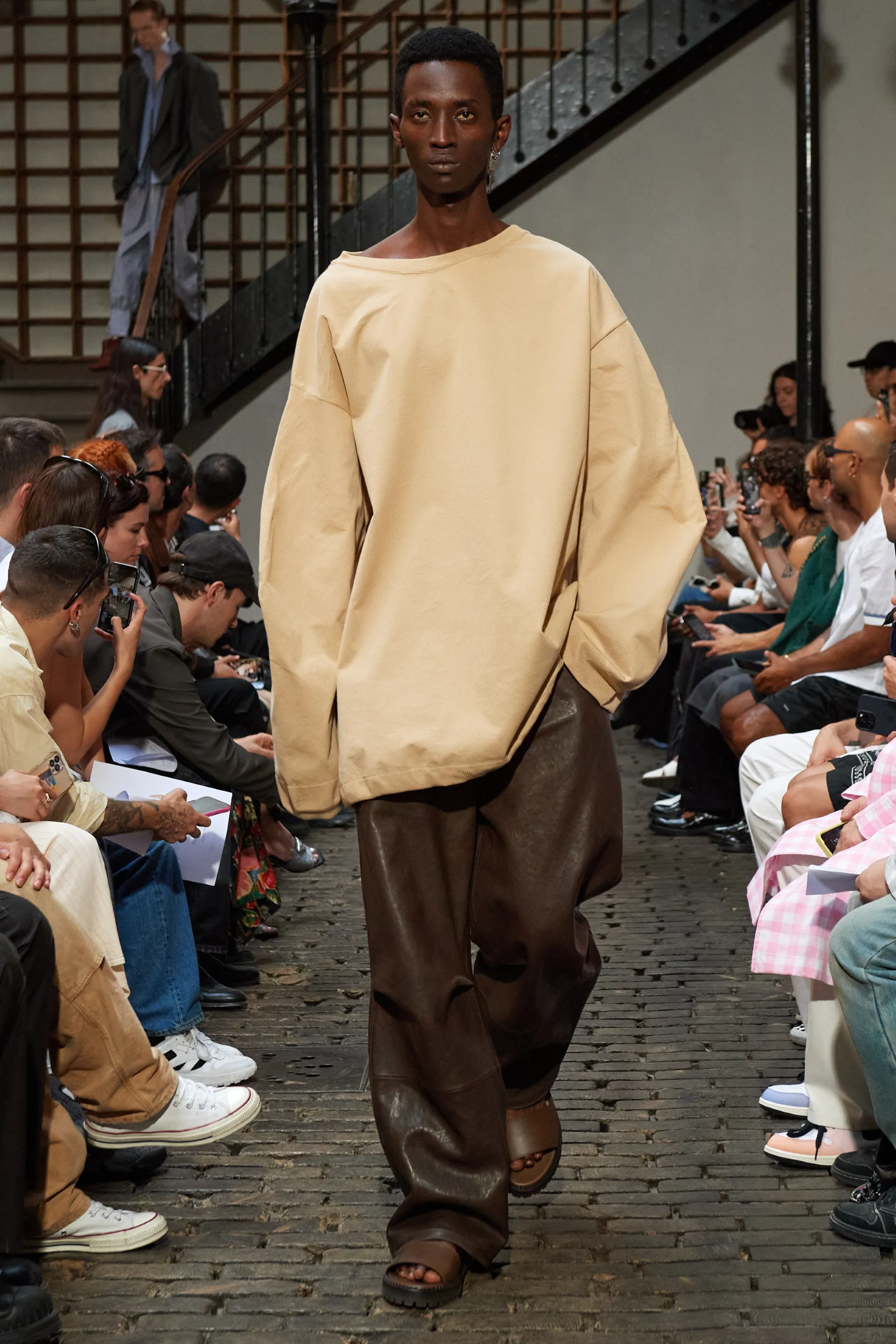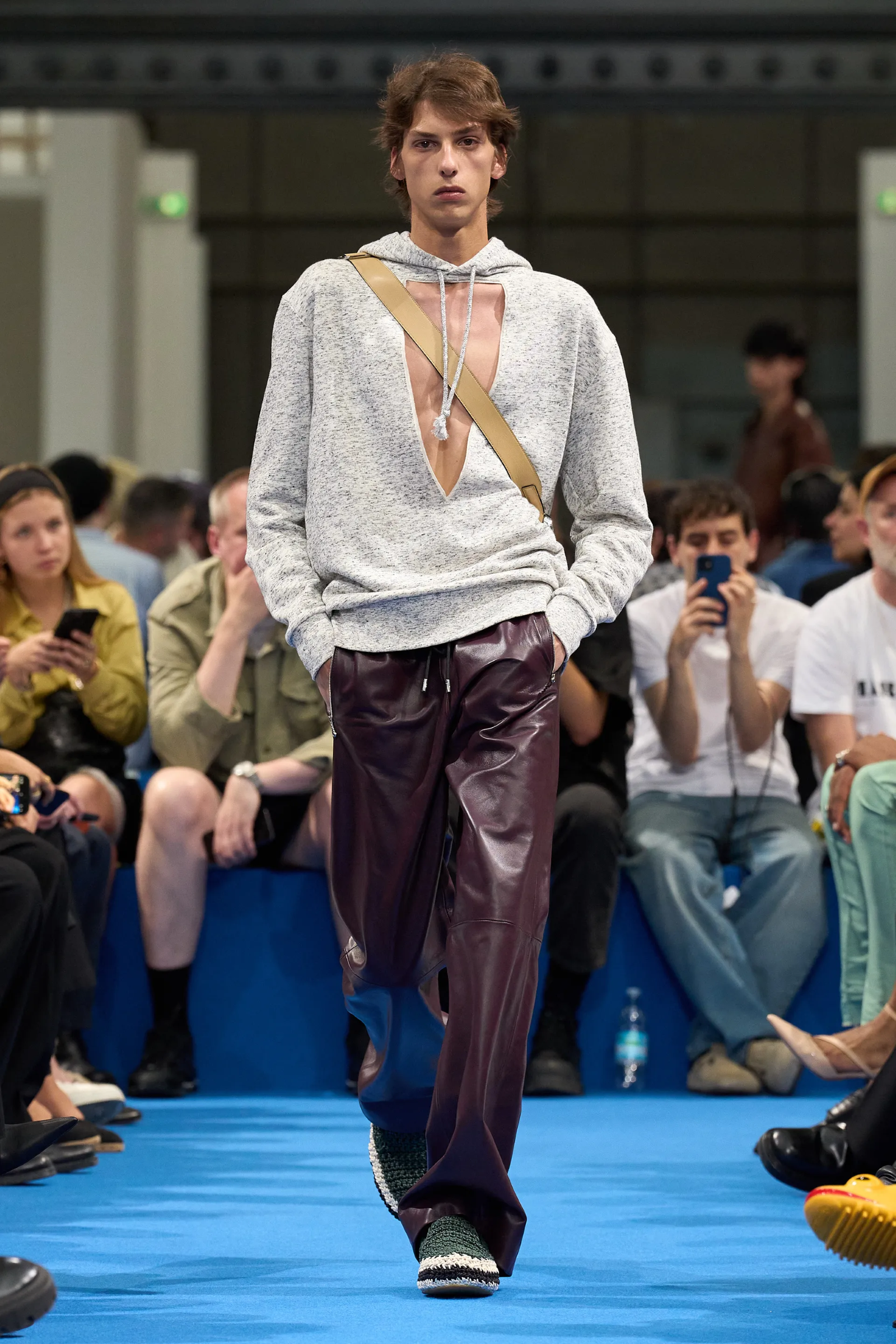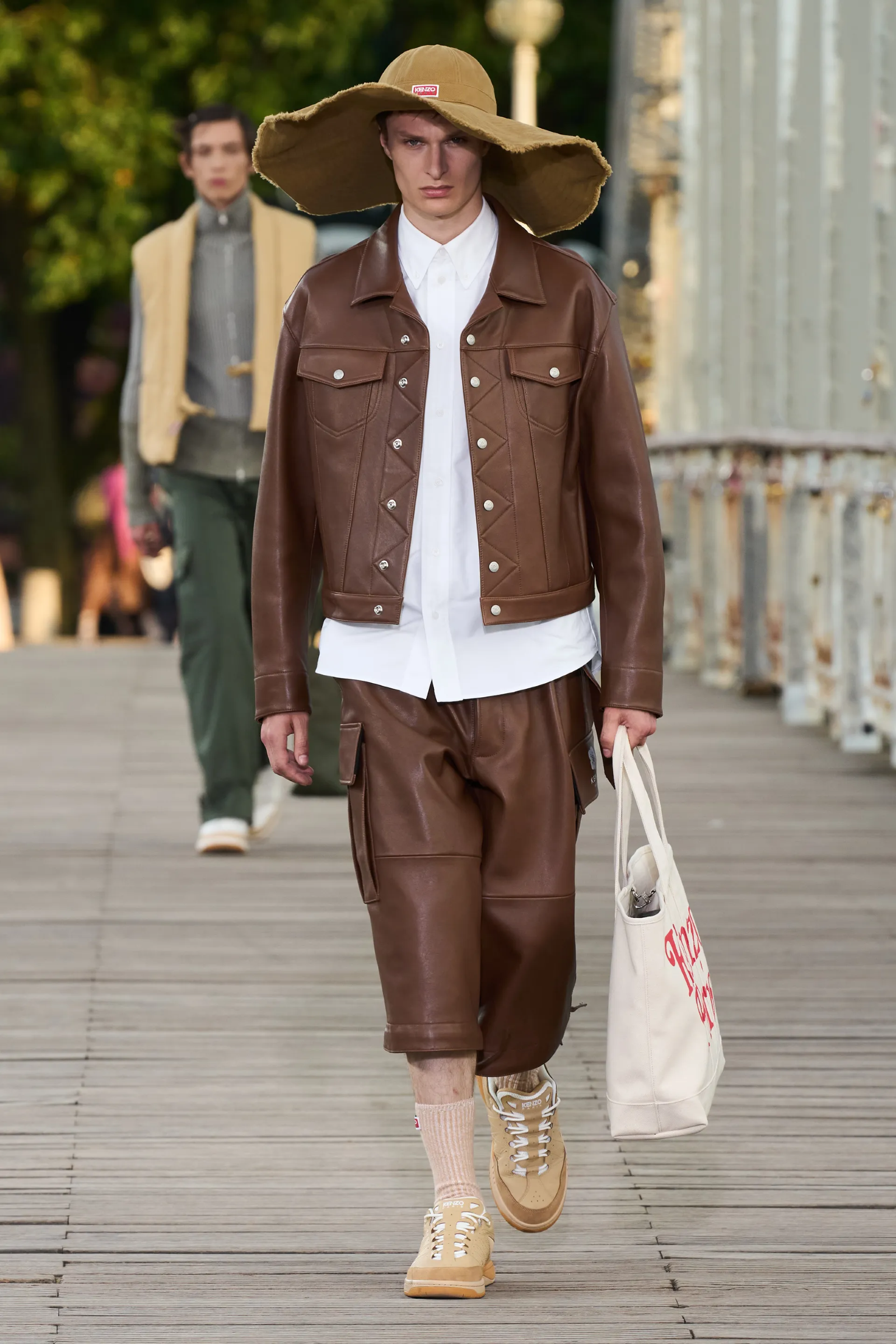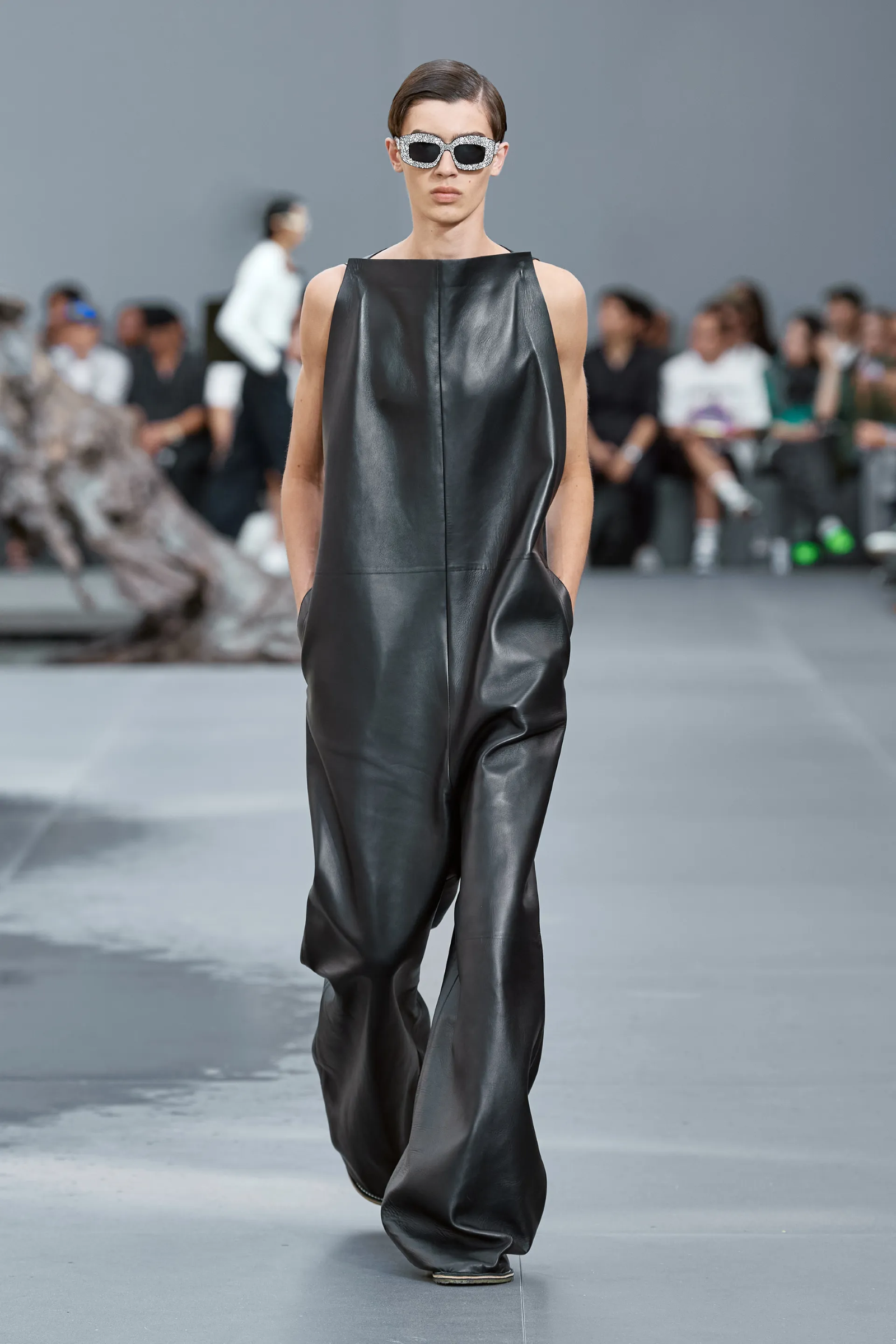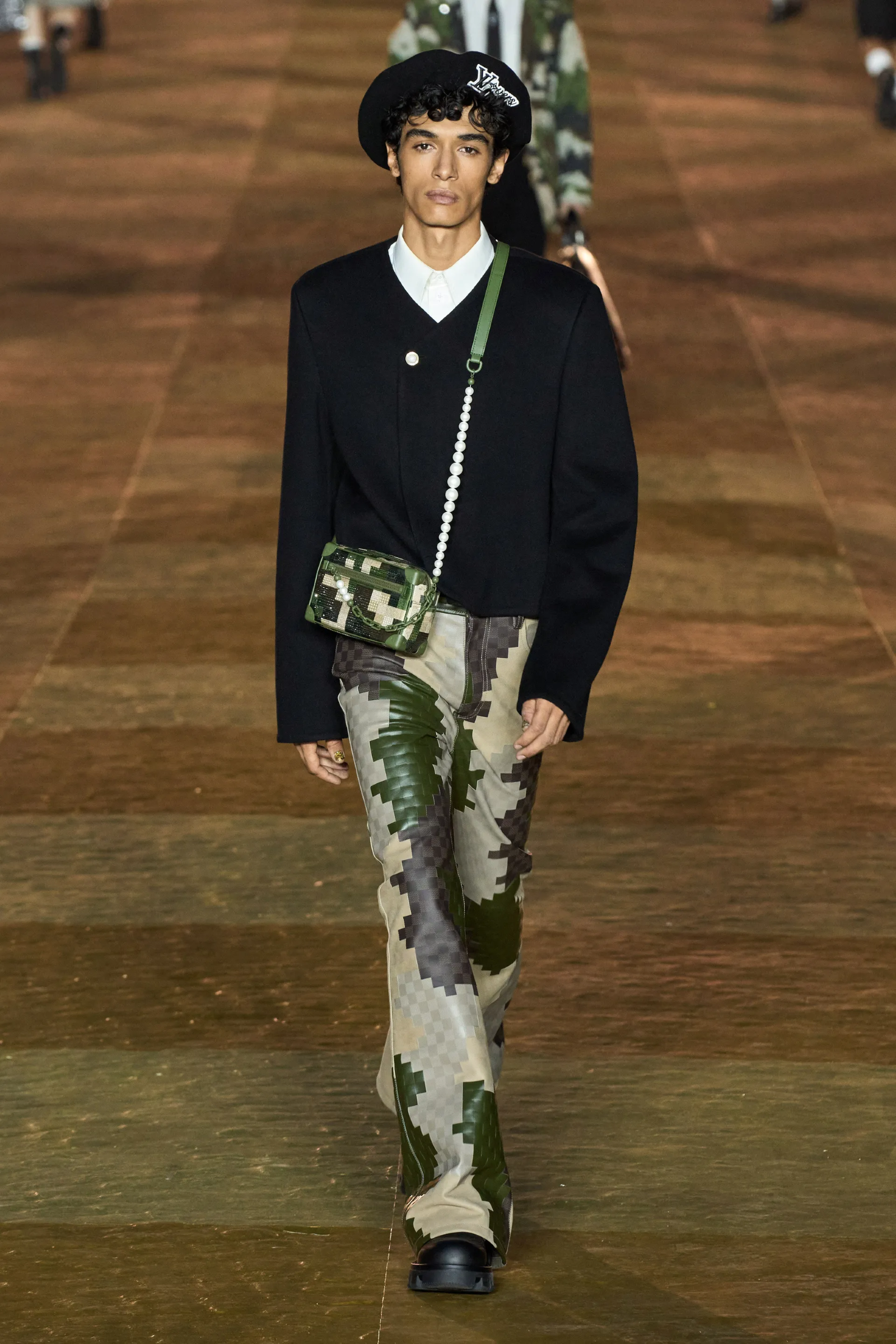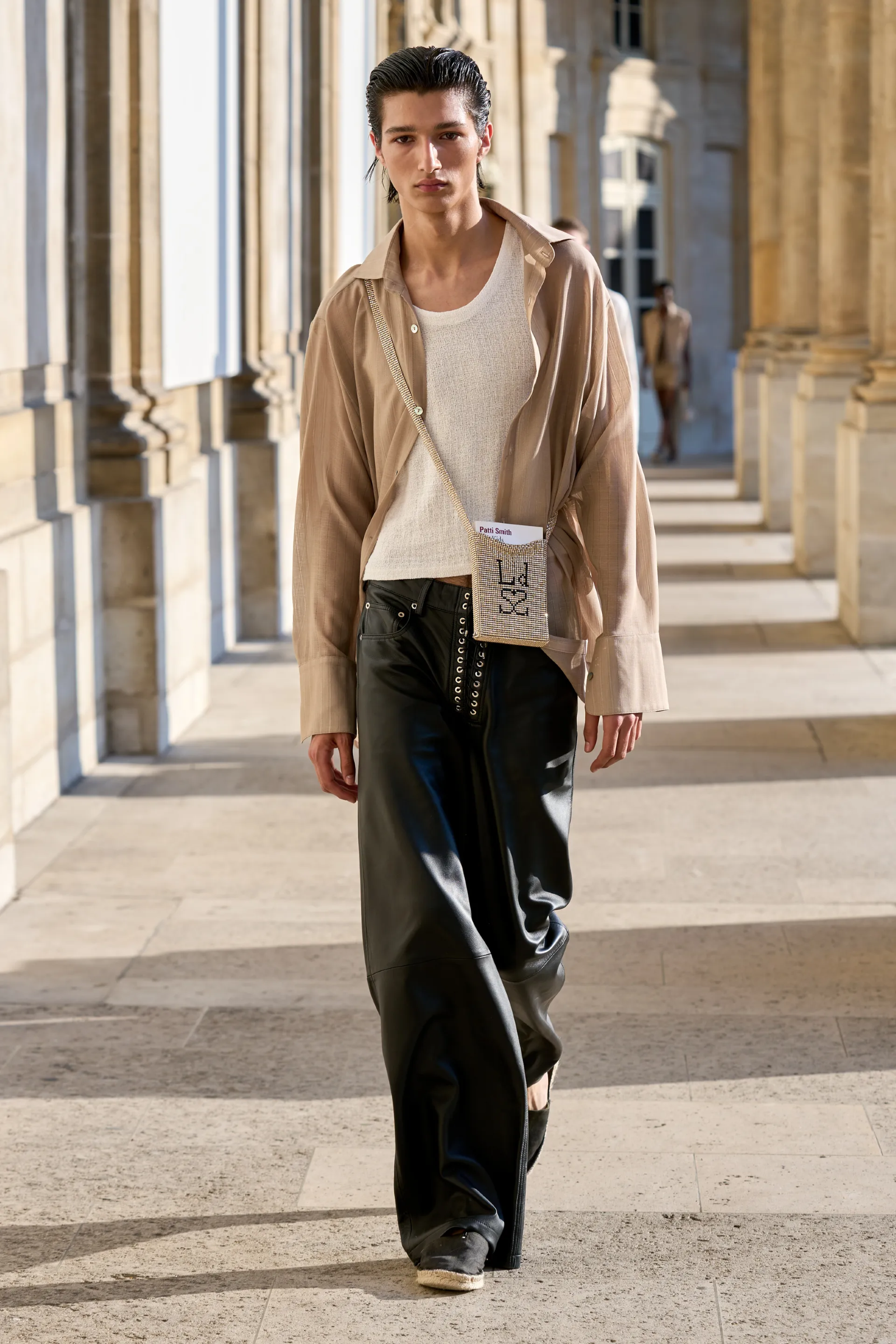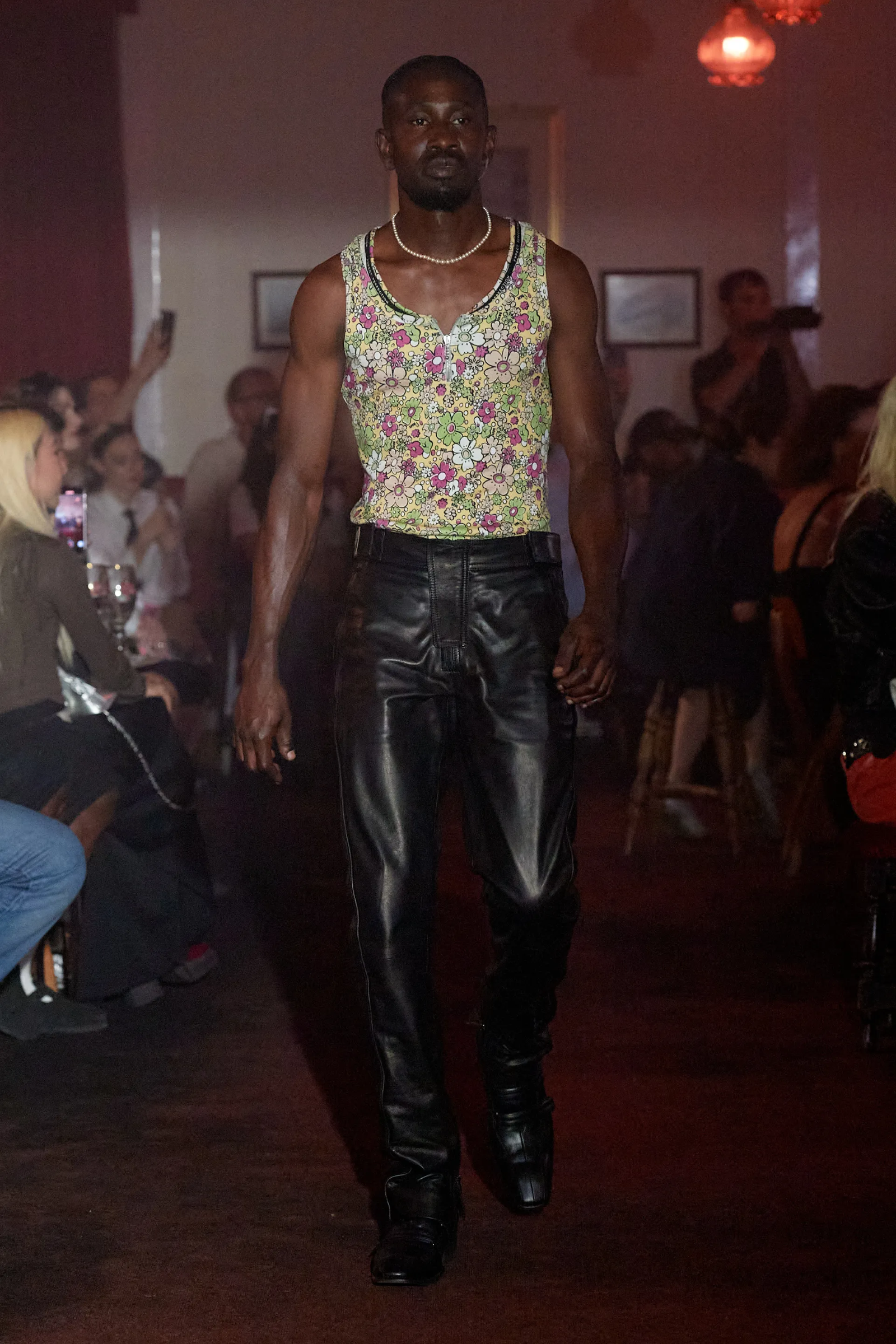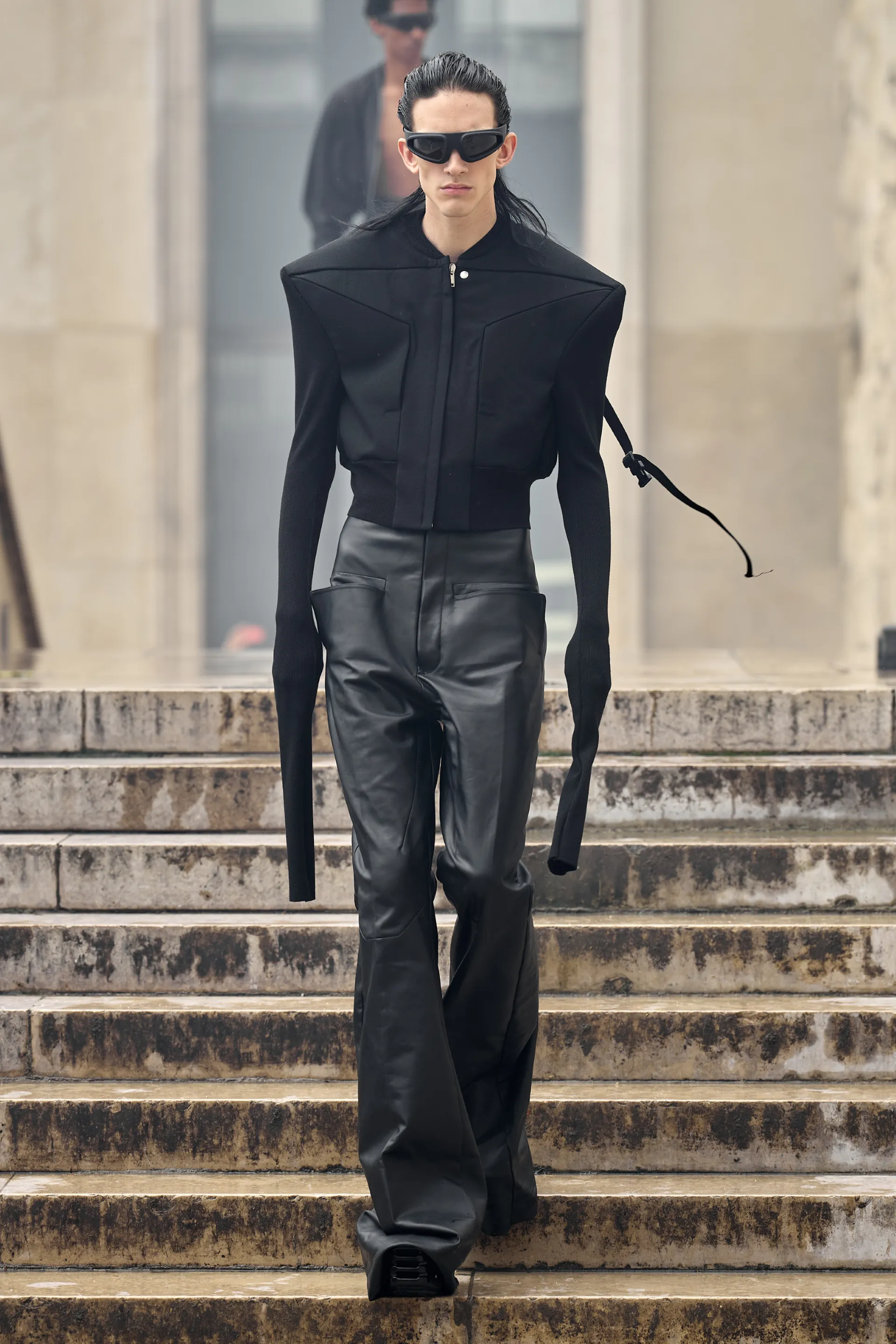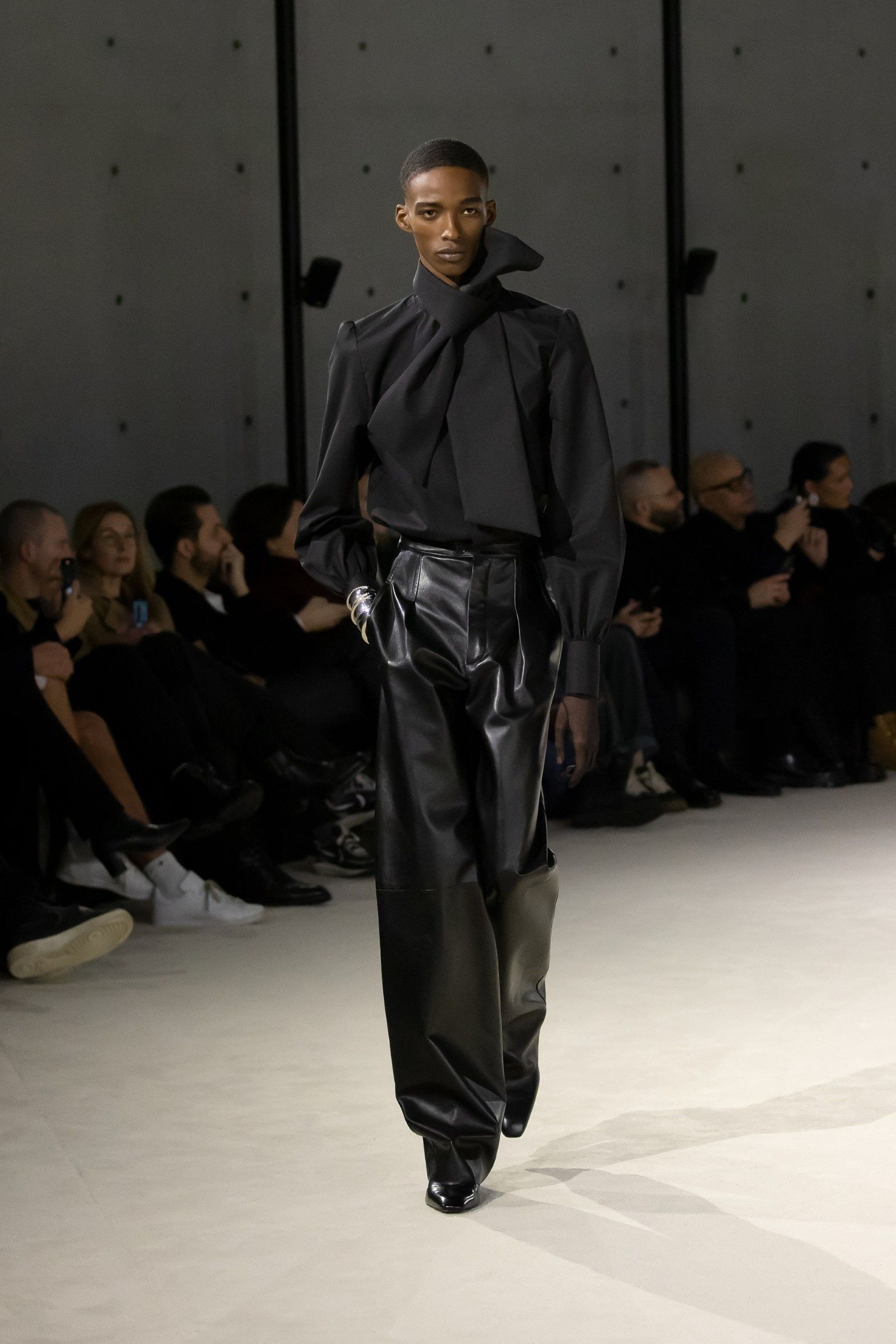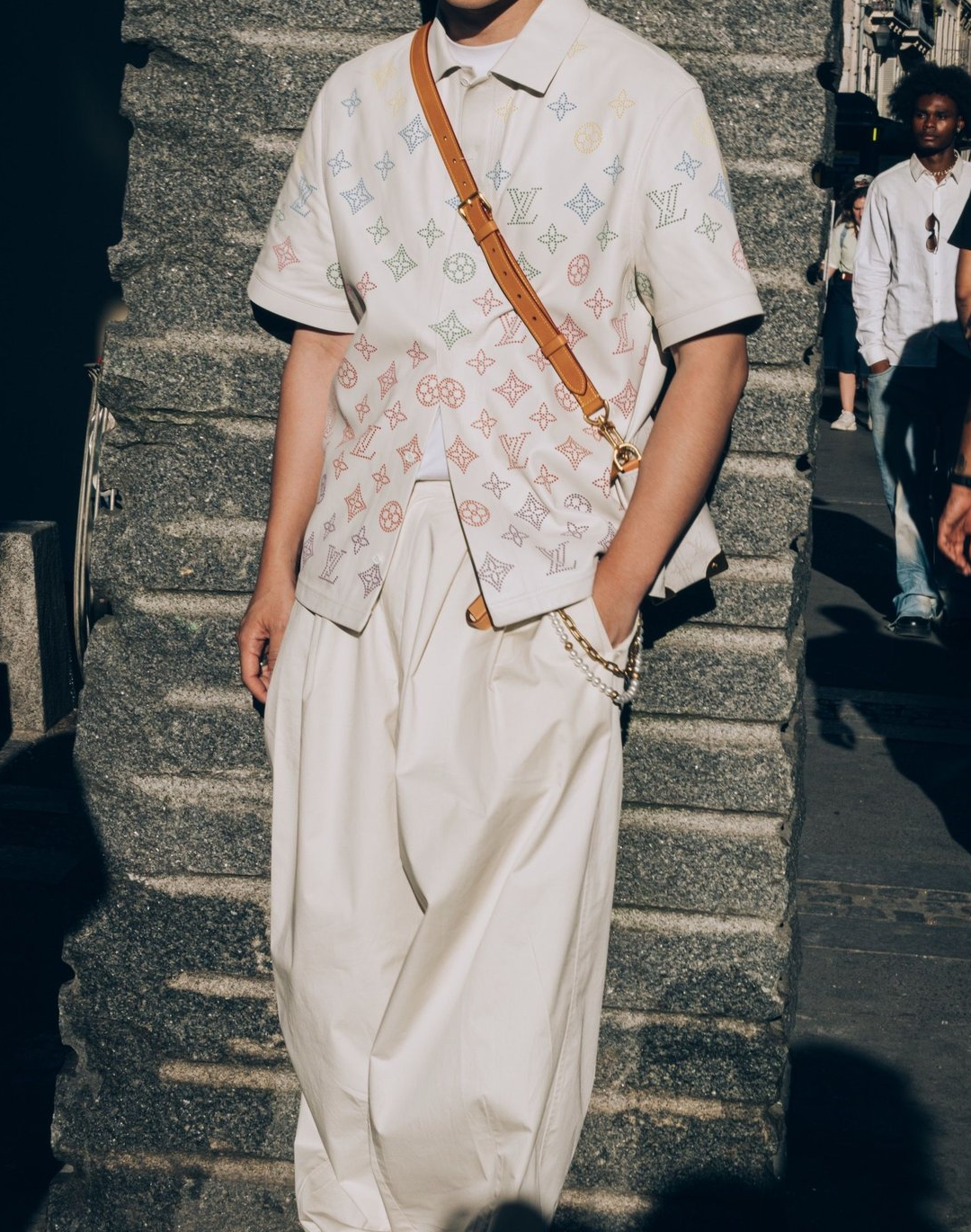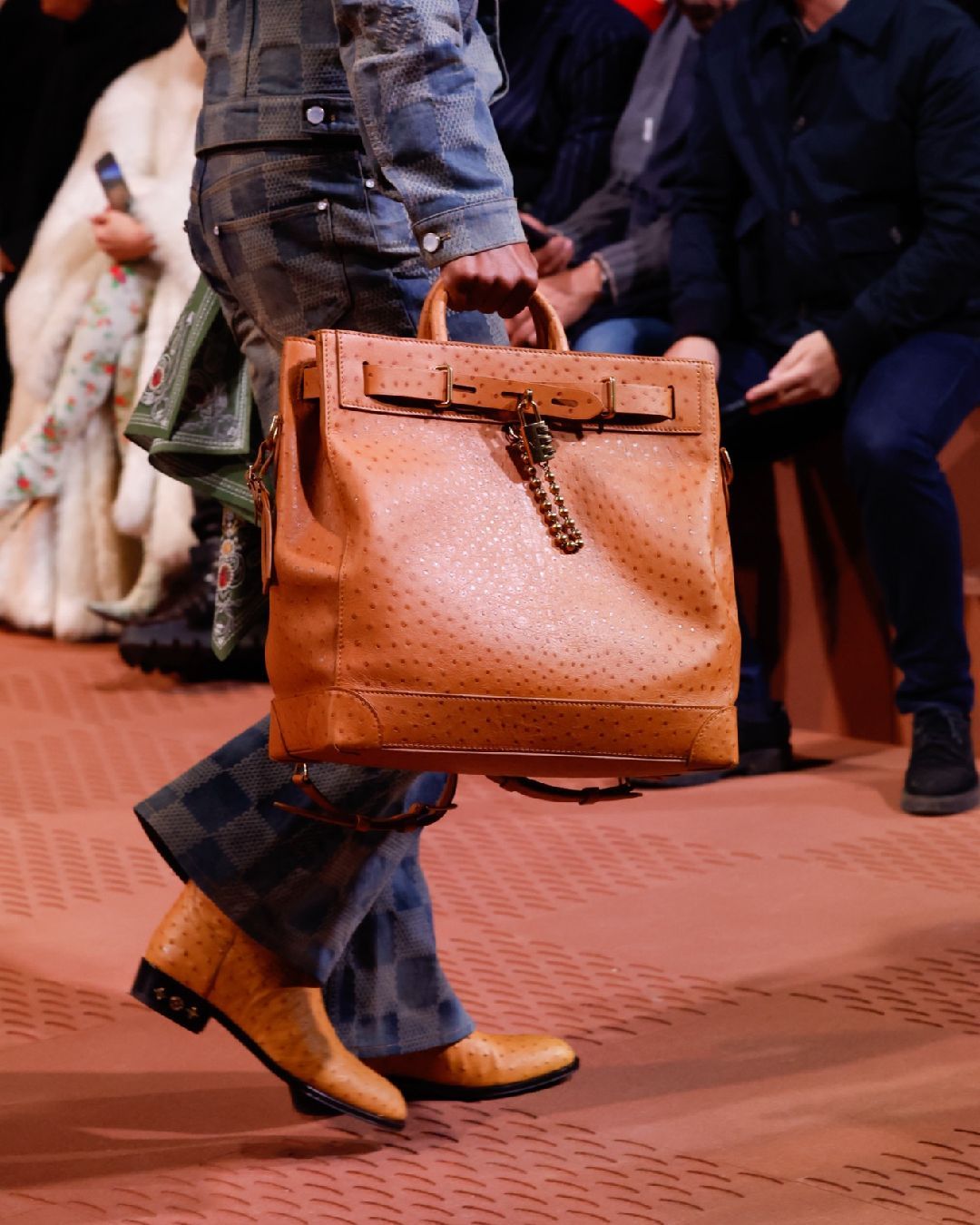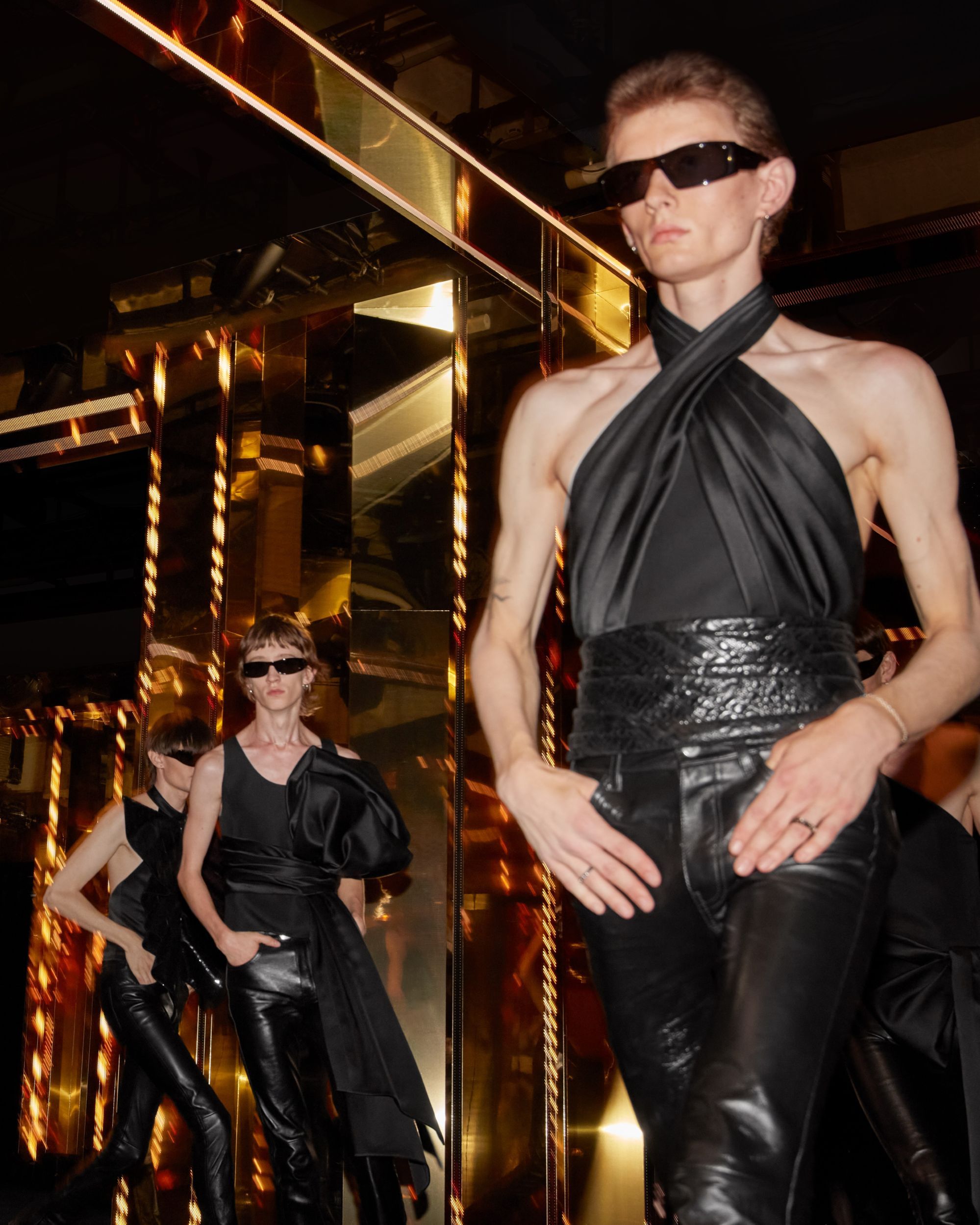
This winter, the leather pant is back In short, the rule is "edgy but comfortable"
One of the most interesting passages from the famous interview that Kanye West gave in 2013 to the BBC concerns leather pants. "We brought leather jogging pants to Fendi six years ago, and they said 'no.' How many assholes have you seen with leather jogging pants?" West said. Even though the statement is a decade old, it still holds true today. Not only have leather pants been prevalent in numerous fashion shows in recent seasons, but the most popular style seems to be the baggy one – similar in spirit to Kanye and Virgil Abloh's famous joggers but without ankle cuffs. Conceptually, it made sense to see a significant abundance of them in the collection that Pharrell designed for Louis Vuitton, bringing continuity to the vocabulary established by Abloh in previous years. They are also present in the repertoires of Celine and Saint Laurent, indispensable at Enfants Riches Deprimès, as well as at EgonLab and Rick Owens, more unusual at Emporio Armani and Fendi, and certainly more eccentric than ever at Loewe, where Jonathan Anderson transformed them into a kind of surrealist jumpsuit. In these various instances, the vibe of the pants hasn't changed too much: all wide and very soft, luxurious in the opulent abandonment of drapes and dense textures, almost always used to create a rich tactile and chromatic contrast with the paired top.
Now, the concept of leather pants dates back at least a hundred and fifty years. While almost every civilization in history has used leather to create pants (from the subligacula of Ancient Rome to the traditional Bavarian lederhosen), the lineage of what we wear today is all American. Born among the vast Native American populations, leather pants were adopted in the form of chaps by cowboys, sealing their destiny for future generations through 1940s Western cinema and later through its translation into the visual lexicon of motorcycle clubs born after World War II. To associate them with rock music, Eddie Cochran wore them for the first time on television in the '60s, followed briefly by the Beatles and especially by Elvis Presley for the 1968 Comeback Special. In the '50s, a German film inspired by James Dean's iconic Rebel Without a Cause, named Die Halbstarken, dressed young actor Horst Buchholz in black leather pants for the entire film. The message? He was a rebel. From then on, between Jim Morrison and Patti Smith, the history of leather pants continued into the '80s, spreading among queer subcultures, film villains, and always in the world of music where, between Michael Jackson and Run DMC, leather pants became effectively baggy. Meanwhile, it's clear they shed at least part of their rebellious meanings, certainly becoming something unusual even though the culture of the '90s and early 2000s relegated them to fantasy films, early cinematic superheroes, and vida loca aesthetics like Ricky Martin's. However, today their meaning appears to have changed.
If brands like Celine and Enfants Riches Deprimès (as well as Our Legacy) maintain enough roots in the rock world to keep leather pants a symbol of celebrity, excess, hedonism, and transgression with hints of both BDSM and paramilitary aesthetics, the approach in other brands is quite different. Liberated from its limiting cultural connotations, leather pants now present themselves in the immediacy of their aesthetics, as a pure display of the preciousness of their materials. In numerous looks, black leather pants are either inserted into a semi-formal ensemble as an unexpected substitute for jeans or black-gray pants, or they are deliberately contrasted with a top of specific texture: EgonLab pairs them with fur cut-outs with a BDSM flavor; Armani and Fendi mix them with a fishnet top; brands like Saint Laurent, Zegna, Louis Vuitton, and JW Anderson pair them with simple shirts, blazers, or generally with knitwear – virtually every fabric, even the most basic cotton, takes on its prominence when combined with the sheen of leather, its structure, and even its hardness. In a year dominated by quiet luxury, where branding is subdued everywhere, and surfaces, colors, and cuts take on their relevance (even at the cost of surprises or particular flashes of ideas), luxury must be communicated through materials that unequivocally speak of wealth. Leather would be one of those. However, we hope not to be talking about cashmere pants in a few months.











































